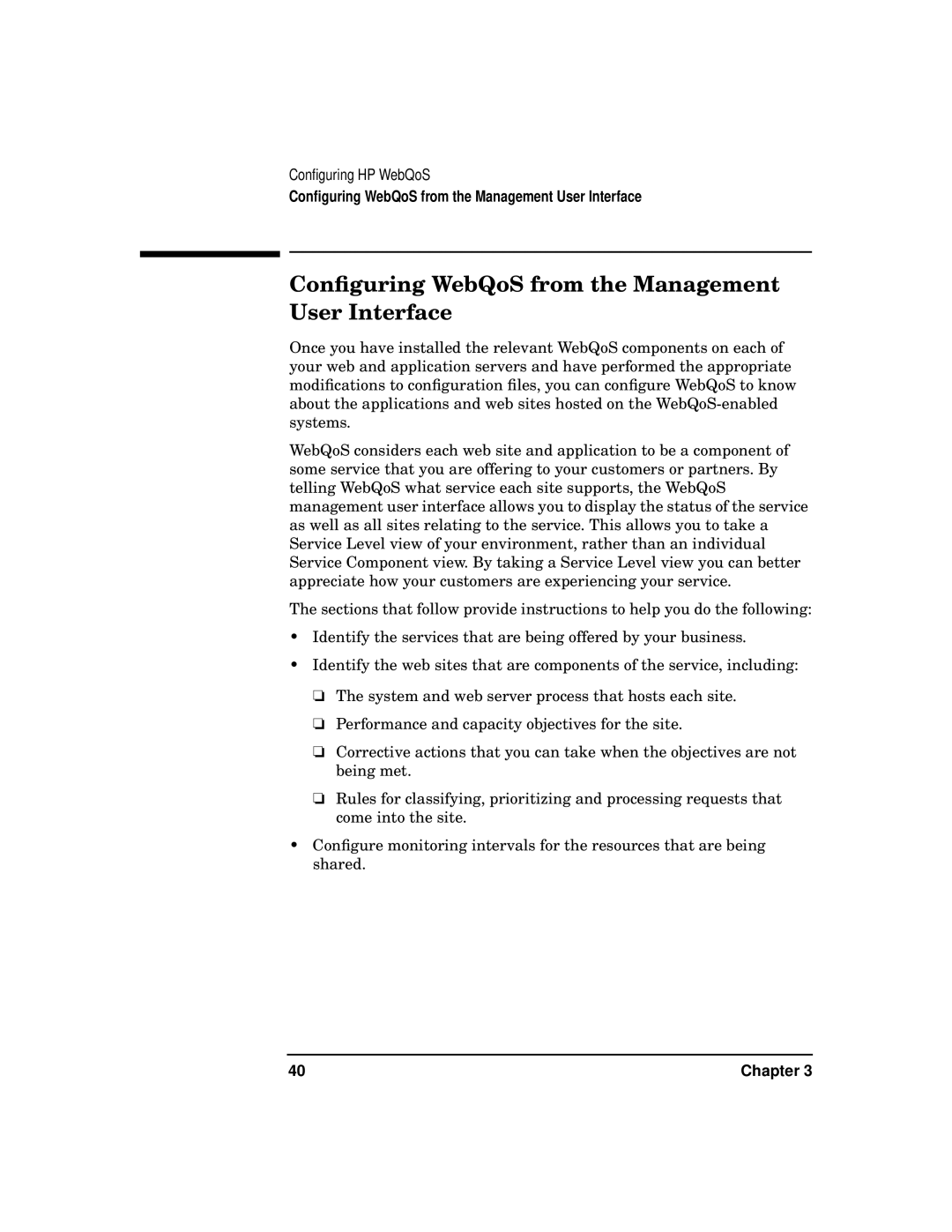
Configuring HP WebQoS
Configuring WebQoS from the Management User Interface
Configuring WebQoS from the Management User Interface
Once you have installed the relevant WebQoS components on each of your web and application servers and have performed the appropriate modifications to configuration files, you can configure WebQoS to know about the applications and web sites hosted on the
WebQoS considers each web site and application to be a component of some service that you are offering to your customers or partners. By telling WebQoS what service each site supports, the WebQoS management user interface allows you to display the status of the service as well as all sites relating to the service. This allows you to take a Service Level view of your environment, rather than an individual Service Component view. By taking a Service Level view you can better appreciate how your customers are experiencing your service.
The sections that follow provide instructions to help you do the following:
•Identify the services that are being offered by your business.
•Identify the web sites that are components of the service, including:
❏The system and web server process that hosts each site.
❏Performance and capacity objectives for the site.
❏Corrective actions that you can take when the objectives are not being met.
❏Rules for classifying, prioritizing and processing requests that come into the site.
•Configure monitoring intervals for the resources that are being shared.
40 | Chapter 3 |
